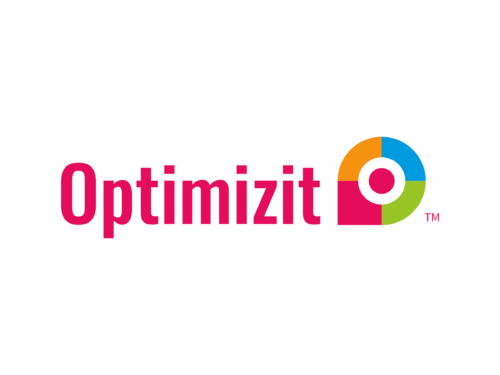Ranking higher on Google is a goal many website owners strive for. The higher your site appears in search engine results, the more traffic it will likely receive. One of the most effective ways to improve your ranking is through strategic use of keywords. Keywords help search engines understand what your content is about and match it with users’ search queries.
To make the most out of keywords, you first need to understand how to research them. Keyword research involves finding phrases and terms that people are searching for related to your niche. This will help you know what language your potential visitors are using, allowing you to create content that matches their searches.
Placing these keywords effectively throughout your content is just as important. Search engines not only look at the presence of keywords but also consider their placement and relevance. Integrating keywords in a natural way can boost your content’s visibility without making it seem forced.
Another powerful tool for improving your ranking is the use of long-tail keywords. These are more specific phrases that often have lower search volume but higher conversion rates. They help attract visitors who are looking for precisely what you offer.
By continually monitoring and adjusting your keyword strategy, you can keep improving your site’s ranking. Search trends evolve, and your keyword strategy should evolve with them to stay effective and relevant. Let’s delve into each of these strategies in more detail to help you rank higher on Google.
Understanding Keyword Research
Keyword research is the foundation of an effective SEO strategy. It helps you discover the words and phrases most relevant to your audience. Start by using tools like Google Keyword Planner, Ahrefs, or SEMrush to identify keywords that people are searching for in your industry. These tools can provide insight into search volume and competition levels for different keywords.
Once you have a list of potential keywords, analyze which ones are most relevant to your content. Look for a balance between high search volume and low competition. Keywords that have a high search volume mean a lot of people are searching for them, but high competition means a lot of websites are also targeting those keywords. Finding a good balance can help you target keywords that you can realistically rank for.
It’s also important to consider the search intent behind keywords. This involves understanding what users are looking for when they type a particular keyword. There are generally three types of search intent: informational (looking for information), navigational (looking for a specific website), and transactional (looking to make a purchase). Aligning your keywords with the right search intent ensures that visitors finding your content are more likely to engage and convert.
Effective Keyword Placement in Your Content
Placing keywords effectively in your content is just as important as selecting the right ones. Start by incorporating your main keyword naturally in the title of your page or blog post. The title is one of the first elements search engines and users see, so it should clearly indicate what your content is about.
Next, make sure your keyword appears in the first 100 words of your content. This early placement helps search engines understand the topic of your page right away. Including your keyword in headings and subheadings (H1, H2, H3) also signals to search engines that these sections are important, and helps users know what to expect.
Using your keyword naturally throughout the body of the content is also crucial. Avoid keyword stuffing, which is the practice of overloading your content with keywords to manipulate search rankings. Keyword stuffing can harm readability and user experience, and search engines may penalize your site for it. Aim for a keyword density of around 1-2%, meaning your keyword appears once or twice for every 100 words.
Additionally, use synonyms and related terms to provide context. This not only makes your content more engaging for readers but also helps search engines understand the broader context of your content.
By following these steps, you ensure that your keywords are working effectively to boost your SEO without disrupting the quality of your content.
Long-Tail Keywords and Their Benefits
Long-tail keywords are longer and more specific phrases that visitors might use when they are closer to making a purchase or finding exactly what they need. For example, instead of just “shoes,” a long-tail keyword would be “kids’ waterproof hiking shoes.” These keywords may have lower search volumes but often come with higher conversion rates. This is because they attract a more targeted audience who are likely ready to take action.
One of the primary benefits of using long-tail keywords is that they face less competition. Fewer websites are targeting these specific phrases, making it easier for your content to rank higher in search results. Additionally, long-tail keywords help you meet the search intent more accurately. Users searching with long-tail keywords are usually looking for something very specific, and providing that can enhance user satisfaction and engagement.
Implementing long-tail keywords can improve your organic traffic and help you build authority in niche areas. They are particularly useful for new websites or those with lower domain authority since it is easier to rank for these keywords than for highly competitive short keywords.
Monitoring and Adjusting Your Keyword Strategy
SEO and keyword trends are constantly changing, so it’s essential to regularly monitor and adjust your keyword strategy. Start by using tools like Google Analytics and Google Search Console to track your site’s performance. These tools can show you which keywords are driving traffic to your site and how well your pages are ranking for those keywords.
Regularly review your keyword performance to identify any shifts or trends. If certain keywords are underperforming, consider tweaking your content or exploring alternative keywords. Keep an eye on changes in search volume and competition levels for your target keywords as these can affect your rankings.
Another important aspect is updating your content to keep it relevant and engaging. Refresh old blog posts with new information and re-optimize them with current keywords. This not only helps in improving rankings but also enhances the user experience by providing updated content.
Finally, stay informed about new keyword opportunities. Industry trends and user behavior can change, leading to new keywords becoming popular. Being proactive in adjusting your keyword strategy ensures your content stays optimized and continues to attract the right audience.
Conclusion
Understanding and using keywords effectively can significantly impact your website’s visibility and ranking on Google. By conducting thorough keyword research, placing keywords strategically in your content, leveraging the power of long-tail keywords, and consistently monitoring and adjusting your strategy, you can enhance your SEO efforts and achieve better search engine performance.
Improving your keyword strategy requires ongoing effort, but the rewards are worth it. Higher rankings mean more traffic, more engagement, and ultimately more conversions. This comprehensive approach will help you stay ahead in the ever-changing SEO landscape.
If you’re seeking expert assistance in enhancing your online presence, Optimizit offers affordable content marketing and professional SEO services to help you reach your goals. Get in touch today to discover how we can optimize your website’s visibility and deliver impactful results.

